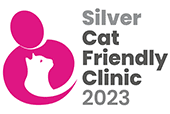GDV can also be known as Bloat or Gastric Torsion
Introduction
GDV is a life-threatening emergency. It is a common condition in large,deep chested breeds such as German Shepherds, Weimeraners, Great Danes, Irish Wolfhounds, St Bernards and URGENT VETERINARY ATTENTION is needed. Although larger breeds are most commonly affected any size dog can suffer from GDV.One of the most important factors as to whether a dog survives this condition is how quickly they receive veterinary attention. Unfortunately, even with excellent treatment death rates of upto 45% have been reported in studies.
Causes
The exact cause of GDV is not known. Something causes gas to accumulate in the stomach (gastric dilatation) resulting in the dogs tummy (abdomen) getting bigger and bigger. In many cases this is accompanied by the stomach twisting (volvulus). It would seem logical that gas accumulation occurs first and then the stomach twists. However, some studies have shown that twisting may occur before bloating in some cases. Many studies have been carried out in an attempt to identify the cause of GDV. No absolute cause has been found but the following have found to be risk factors that may increase the risk of GDV:
- Large and giant breed dogs and deep chested dogs are at highest risk.
- Dogs with a first degree relative (eg father-son) with a history of GDV are at higher risk. Ideally these dogs should not be bred from.
- Risk increases with age
- Risk may increase after spleen removal
- Rapid gulping of food may increase risk
- Eating from a raised dish may increase risk
- Stress (grooming, dog shows, boarding, other dogs) may precipitate GDV
- A happy easy going personality may reduce the risk
As a result the following recommendations can be carried out at home to reduce risks of GDV:
-
Feed several small meals a day
-
Avoid stress during feeding eg separating dogs in the household.
-
Restrict exercise before and after meals. Do not allow dogs to gorge on water after meals or exercise
-
Do not use an elevated food bowl
-
Do not breed from a first degree relative that has had GDV
Clinical Signs
Classically a dog with GDV will be bloated. The tummy (abdomen) swells up. They are uncomfortable and restless. Breathing rate increases. Attempts to vomit are unsuccessful. Quickly they develop signs of shock such as pale mucous membranes, weak pulses, cold extremities and soon will collapse.
Progress of the disease
GDV has many profound and serious effects on the body. Dogs die very quickly if left untreated. The respiratory rate (breathing) system struggles due to the pressure on the diaphragm from the gas build up. Blood supply to the stomach is rapidly loss leading to death of the stomach wall and pancreatitis. Major blood vessels are crushed by the expanding stomach stopping the circulation working. The heart begins to beat out of rhythm. Very quickly shock develops. Urgent treatment is needed.
Diagnosis
History and clinical signs will alert the vet to a GDV. Xrays can be used to confirm the diagnosis and differentiate a dilatation (gas build up) from a GDV
Treatment
Initial treatment is aimed at treating the shock to prepare the dog for general anaesthesia and surgery. Rapid intravenous fluid therapy and oxygen is needed. Also hear arrhymias are treated. Stomach decompression via a stomach tube or needle/catheter can be attempted. When the dog is stable enough they are anaesthatised – this is very risky in such cases but is vital for treatment. During the surgery the stomach is decompressed ( all the gas removed) and twisted back into its normal position. Then a gastropexy is performed. This is a technique to attach the stomach to the body wall permanently. There are many different ways of doing this and depends on surgeon’s preference. If the stomach has been twisted for a while there may be areas that are necrotic (dead). These have to be removed during the surgery and greatly reduce the chances of success. Sometimes the spleen is damaged at the same time as the stomach twists and needs to be removed. There are many possible post operative complications including infection (peritonitis), pancreatitis, heart arrhythmias etc
Summary
It can not be stressed enough that urgent treatment is needed in suspect cases of GDV. There is nothing that can be done at home so do not hesitate to contact your vet.





